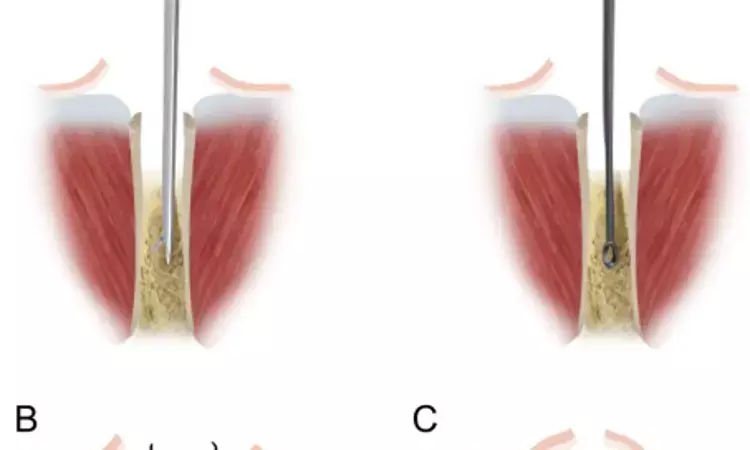- Home
- Medical news & Guidelines
- Anesthesiology
- Cardiology and CTVS
- Critical Care
- Dentistry
- Dermatology
- Diabetes and Endocrinology
- ENT
- Gastroenterology
- Medicine
- Nephrology
- Neurology
- Obstretics-Gynaecology
- Oncology
- Ophthalmology
- Orthopaedics
- Pediatrics-Neonatology
- Psychiatry
- Pulmonology
- Radiology
- Surgery
- Urology
- Laboratory Medicine
- Diet
- Nursing
- Paramedical
- Physiotherapy
- Health news
- Fact Check
- Bone Health Fact Check
- Brain Health Fact Check
- Cancer Related Fact Check
- Child Care Fact Check
- Dental and oral health fact check
- Diabetes and metabolic health fact check
- Diet and Nutrition Fact Check
- Eye and ENT Care Fact Check
- Fitness fact check
- Gut health fact check
- Heart health fact check
- Kidney health fact check
- Medical education fact check
- Men's health fact check
- Respiratory fact check
- Skin and hair care fact check
- Vaccine and Immunization fact check
- Women's health fact check
- AYUSH
- State News
- Andaman and Nicobar Islands
- Andhra Pradesh
- Arunachal Pradesh
- Assam
- Bihar
- Chandigarh
- Chattisgarh
- Dadra and Nagar Haveli
- Daman and Diu
- Delhi
- Goa
- Gujarat
- Haryana
- Himachal Pradesh
- Jammu & Kashmir
- Jharkhand
- Karnataka
- Kerala
- Ladakh
- Lakshadweep
- Madhya Pradesh
- Maharashtra
- Manipur
- Meghalaya
- Mizoram
- Nagaland
- Odisha
- Puducherry
- Punjab
- Rajasthan
- Sikkim
- Tamil Nadu
- Telangana
- Tripura
- Uttar Pradesh
- Uttrakhand
- West Bengal
- Medical Education
- Industry
Scooping Technique for iliac crest may harvest substantial amount of autogenous cancellous bone using small incision

The Masquelet procedure is effective in overcoming large bone defects; however, the limited number of cancellous bone and donor site complications remains a challenge.
Hui Wang et al developed a scooping technique to harvest sufficient cancellous bone from iliac crests for grafting during the Masquelet procedure.
Minimally Invasive Iliac Crest Scooping Technique (MIICST)
An approximate 25 mm incision was made along the iliac crest, 20 mm posterior to the ASIS. A spot was made on the surface of the iliac crest using an awl. It was extended to approximately 10–15 mm using different models of nucleus pulposus forceps and a scraper (1–3 mm in diameter) (Qing Niu, Suzhou, Jiang Su Province, China). Moreover, a diameter scraper was used to remove some of the cortical bone and a small amount of cancellous bone from the superficial to deep level. The cancellous bone was clamped using different models of the nucleus pulposus forceps and scraper between the medial and lateral plates of the iliac bone, similar to a tunnel. Care was taken to prevent bleeding within the iliac muscle due to penetration of the medial and lateral iliac plates using nucleus pulposus forceps. Hemostasis sponges mixed with 1 g of tranexamic acid were filled into the tunnel cavity to reduce bleeding, and a drainage tube was placed if necessary. The drainage was released after clamping for 6 h. The incision was sutured and local pressure was applied appropriately at the end. The drainage tube was removed if the fluid volume was < 30 mL/day. The sutures in the iliac region were removed after 1 week.
The retrospective study included 13 patients who underwent the Masquelet procedure with cancellous bone grafting using the scooping technique.
The following parameters were observed:
(1) duration and total volume of cancellous bone extraction;
(2) amount of bleeding and drainage fuid, and Visual Analog Scale (VAS) score of pain at the donor site during diferent periods; and
(3) complications and bone regeneration at the ilium at the final follow-up. Results
Key findings of the study were:
• The median follow-up duration was 17 months.
• There were 3 unilateral and 10 bilateral extraction sites.
• The mean total amount extracted, extraction duration, bleeding, and drainage were 39 mL, 23 min, 49 mL, and 44 mL, respectively.
• Only three patients felt pain (VAS score: 1 point) at the final follow-up.
• Postoperatively, one case each of hematoma and lateral femoral cutaneous nerve injury supervened, and no infections or other complications occurred.
• The last computed tomography examination showed varying degrees of bone regeneration in the ilium.
The authors concluded – “The scooping technique for the iliac crest produced a substantial amount of autogenous cancellous bone using a small incision. It retained the appearance and morphology of the ilium with few complications. We believe it is a successful and safe option for treating bone defects.”
Further reading:
Scooping Technique to Acquire Cancellous Bone for Grafting in the Masquelet Procedure: A Retrospective Study Hui Wang, Zhihong Zhang et al Indian Journal of Orthopaedics (2023) 57:1267–1275 https://doi.org/10.1007/s43465-023-00909-3
MBBS, Dip. Ortho, DNB ortho, MNAMS
Dr Supreeth D R (MBBS, Dip. Ortho, DNB ortho, MNAMS) is a practicing orthopedician with interest in medical research and publishing articles. He completed MBBS from mysore medical college, dip ortho from Trivandrum medical college and sec. DNB from Manipal Hospital, Bengaluru. He has expirence of 7years in the field of orthopedics. He has presented scientific papers & posters in various state, national and international conferences. His interest in writing articles lead the way to join medical dialogues. He can be contacted at editorial@medicaldialogues.in.
Dr Kamal Kant Kohli-MBBS, DTCD- a chest specialist with more than 30 years of practice and a flair for writing clinical articles, Dr Kamal Kant Kohli joined Medical Dialogues as a Chief Editor of Medical News. Besides writing articles, as an editor, he proofreads and verifies all the medical content published on Medical Dialogues including those coming from journals, studies,medical conferences,guidelines etc. Email: drkohli@medicaldialogues.in. Contact no. 011-43720751


